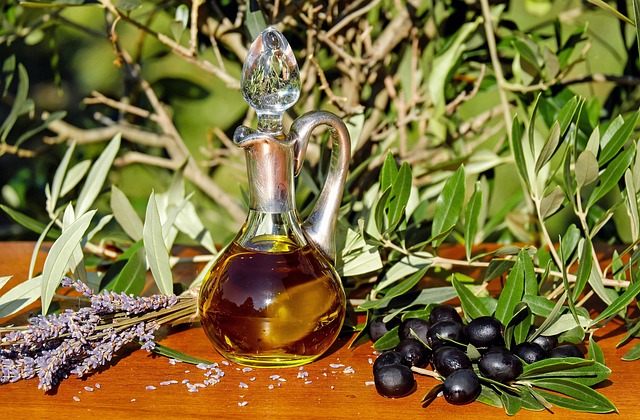
Kalamata olives are a cornerstone of Mediterranean cuisine, celebrated for their rich flavor, versatility, and health benefits. Originating in Greece, these olives have become a global favorite. Whether you’re looking to enhance your recipes or improve your diet, Kalamata olives offer a unique combination of taste and nutrition. In this guide, we’ll explore everything from their origin to their culinary uses, helping you understand what makes them so popular.
What Are Kalamata Olives?
Origin and History of Kalamata Olives
Kalamata olives originate from the Kalamata region in Greece, a place renowned for its olive production. These olives are a staple in Greek cuisine staples, valued for their tangy and rich flavor. Traditionally, they were harvested by hand to preserve their quality and ensure minimal bruising. The cultural significance of Kalamata olives dates back centuries, with their presence in both ancient and modern Mediterranean diets.
Distinct Features of Kalamata Olives
Kalamata olives are known for their almond shape, dark purple color, and smooth, meaty texture. Unlike green olives, Kalamata olives are picked when fully ripened, resulting in a more robust flavor. Their unique brining process, often involving vinegar and salt, enhances their characteristic tang. This makes them distinct from other black olive varieties.
Why Are Kalamata Olives So Popular?
Unique Flavor Profile
The popularity of Kalamata olives lies in their unmatched taste. They offer a rich, tangy, and slightly fruity flavor that pairs well with various dishes. From Greek salads to gourmet pizzas, their versatility makes them a favorite ingredient in Mediterranean flavors. Their rich umami taste adds depth to any dish, elevating even the simplest recipes.
Nutritional Benefits of Kalamata Olives
Kalamata olives are a powerhouse of nutrition. They are high in healthy fats, particularly monounsaturated fats, which support heart health. Additionally, they are rich in antioxidants like polyphenols, known to reduce inflammation and protect against chronic diseases. For those focusing on weight management, Kalamata olives are low in calories, making them an excellent addition to balanced diets.
How Are Kalamata Olives Processed?
The Fermentation and Curing Process
The journey of Kalamata olives from tree to table involves a meticulous fermentation and curing process. After harvesting, the olives are soaked in a brine solution made of water, vinegar, and salt. This process not only enhances their flavor but also preserves them. The use of vinegar-brined olives is a traditional method that gives Kalamata olives their distinct tangy taste. The curing process also reduces bitterness, making them ready for consumption.
Pitted vs Whole Kalamata Olives
Kalamata olives are available in both pitted and whole forms, each offering unique benefits. Pitted olives are convenient for recipes like tapenades or salads, while whole olives retain their firmness and are ideal for snacking. Choosing between the two depends on the intended use, with both types offering the same nutritional benefits and bold flavors.
How to Use Kalamata Olives in Cooking
Traditional Greek Dishes Featuring Kalamata Olives
Kalamata olives are integral to many traditional Greek dishes. They are a star ingredient in Greek salads, combined with tomatoes, cucumbers, and feta cheese to create a refreshing, nutrient-packed meal. Another popular use is in dishes like moussaka and spanakopita, where their robust flavor enhances the overall taste.
Kalamata Olives in Modern Cuisine
Modern chefs have embraced Kalamata olives for their versatility. They are used as toppings for pizzas and pastas or blended into tapenades for a gourmet touch. Their pairing with cheeses and wines makes them a favorite for charcuterie boards. Experimenting with Kalamata olives in soups, stews, and sandwiches can bring a Mediterranean twist to your meals.
Where to Buy and Store Kalamata Olives

Buying Tips for Authentic Kalamata Olives
When buying Kalamata olives, authenticity is key. Look for labels specifying “Product of Greece” to ensure they are genuine. Avoid overly processed varieties, as they may lack the traditional flavor and nutrition. Reputable online stores and specialty food markets are excellent sources for authentic Kalamata olives.
Proper Storage Tips
Proper storage is essential to maintain the quality of Kalamata olives. Keep them submerged in their brine or transfer them to a jar with olive oil for added preservation. Store them in a cool, dark place, such as a refrigerator. Avoid exposing them to air, as this can cause spoilage or loss of flavor.
Conclusion
Kalamata olives are a culinary gem that combines rich flavor with outstanding nutritional benefits. From their ancient Greek origins to their role in modern cuisine, these olives offer something for everyone. Whether you’re looking to experiment with new recipes or improve your diet, Kalamata olives are a delicious and healthy choice. Try them today and enjoy the true taste of the Mediterranean.
FAQs
What makes Kalamata olives different from regular olives?
Kalamata olives are larger, darker, and have a distinct tangy flavor. Their unique curing process, often using vinegar or red wine, sets them apart.
Are Kalamata olives good for weight loss?
Yes, their healthy fats and low-calorie content make them suitable for weight management.
How are Kalamata olives processed?
They undergo fermentation and curing in brine solutions, enhancing their flavor and reducing bitterness.
What are the health benefits of Kalamata olives?
They are rich in monounsaturated fats, antioxidants, and essential nutrients that promote heart health and reduce inflammation.
Can I cook with Kalamata olives?
Absolutely! They are versatile and can be used in salads, pizzas, pastas, and tapenades to enhance flavor.






